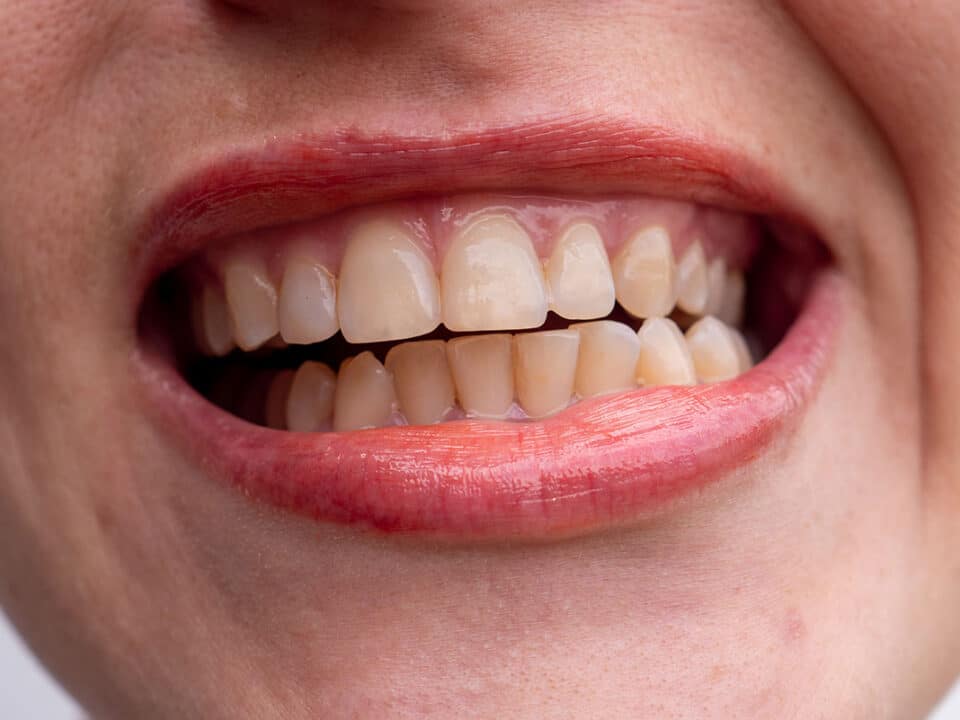Dental fillings are a fundamental aspect of restorative dentistry, which is crucial in repairing cavities and restoring the structural integrity of damaged teeth. Primarily used to repair cavities caused by tooth decay, fillings restore the affected tooth’s integrity, function, and aesthetics. The process involves removing the decayed tooth material, cleaning the affected area, and then filling it with a material such as amalgam, composite, or porcelain. This restores the tooth’s shape and prevents further decay by sealing off any cracks or spaces where bacteria might enter. With advancements in dental technology, today’s fillings are functional and can also be closely matched to the natural colour of your teeth, offering a seamless and aesthetically pleasing result.
Table of Contents
Types of dental fillings: An overview
Dental fillings come in diverse materials, each with unique benefits and applications. From traditional amalgam to modern composite resins, gold, silver, ceramic, and glass ionomer, this range offers options to suit various needs and preferences.
Types of dental fillings (past and present)
- Amalgam fillings
- Composite resin fillings
- Gold and silver fillings
- Ceramic fillings
- Glass Ionomer fillings
- Porcelain fillings
Amalgam fillings: Pros and cons
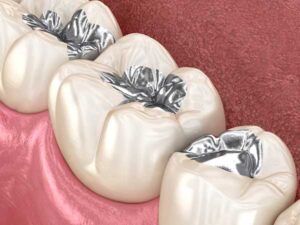 Also known as silver amalgam, these fillings are known for their durability and affordability, having been a staple in dental care for decades. They are made of a mixture of tin, mercury, copper and silver. While they were once the go-to option, their use has declined, and dentists rarely use this material for dental fillings. This type of filling is less aesthetically pleasing due to its metallic appearance, can lead to tooth staining, and has been known to cause tooth sensitivity (unproven scientifically). They may also contain traces of elemental mercury, which, while proven safe, leads many dentists to choose another option for their fillings.
Also known as silver amalgam, these fillings are known for their durability and affordability, having been a staple in dental care for decades. They are made of a mixture of tin, mercury, copper and silver. While they were once the go-to option, their use has declined, and dentists rarely use this material for dental fillings. This type of filling is less aesthetically pleasing due to its metallic appearance, can lead to tooth staining, and has been known to cause tooth sensitivity (unproven scientifically). They may also contain traces of elemental mercury, which, while proven safe, leads many dentists to choose another option for their fillings.
Composite resin fillings: Aesthetic and functional
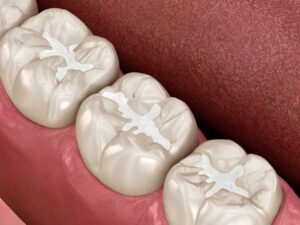 Composite dental fillings are made from a mixture of silica, plastic, glass quartz and other ceramic particles incorporated in a resin base. After tooth preparation, this mixture is bonded into the hollow space left by the removed tooth decay and then hardened using a curing UV light.
Composite dental fillings are made from a mixture of silica, plastic, glass quartz and other ceramic particles incorporated in a resin base. After tooth preparation, this mixture is bonded into the hollow space left by the removed tooth decay and then hardened using a curing UV light.
Composite fillings can be matched to a patient’s tooth colour and are expected to last about five to seven years, after which they will need to be replaced.
Gold fillings: The durable choice
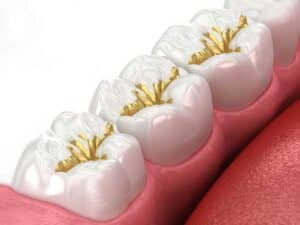 Gold fillings are long-lasting and durable but expensive, making them an uncommon choice. Gold fillings will not corrode or tarnish but are visible as their colour doesn’t match the surrounding teeth. If gold fillings are used at all, they will typically only be used to repair decay damage on the molar teeth so as not to be visible when a patient smiles. Many dental clinics no longer offer gold fillings but may be able to accommodate a patient’s request under special circumstances. A composite or ceramic filling will typically be recommended instead.
Gold fillings are long-lasting and durable but expensive, making them an uncommon choice. Gold fillings will not corrode or tarnish but are visible as their colour doesn’t match the surrounding teeth. If gold fillings are used at all, they will typically only be used to repair decay damage on the molar teeth so as not to be visible when a patient smiles. Many dental clinics no longer offer gold fillings but may be able to accommodate a patient’s request under special circumstances. A composite or ceramic filling will typically be recommended instead.
Ceramic fillings: Beauty and strength
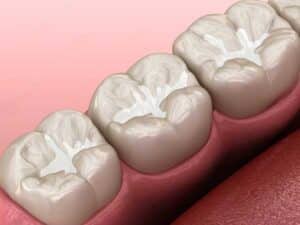 Typically made of porcelain, these fillings are durable, aesthetically pleasing and will last a long time. They can also be colour-matched to the surrounding tooth and do not stain easily.
Typically made of porcelain, these fillings are durable, aesthetically pleasing and will last a long time. They can also be colour-matched to the surrounding tooth and do not stain easily.
The drawbacks of this type of filling are that they are typically bulkier than composite fillings, and require a larger cavity to be created in the tooth. Porcelain crowns are often chosen over fillings due to the amount of material removal that may be necessary.
Glass ionomer fillings
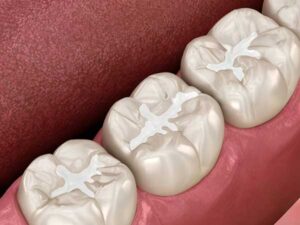 These dental fillings are made of a specific glass and acrylic mixture. Most often used for cavities in young children whose teeth are still undergoing major changes. Glass ionomer fillings release fluoride that helps protect the tooth from continued decay.
These dental fillings are made of a specific glass and acrylic mixture. Most often used for cavities in young children whose teeth are still undergoing major changes. Glass ionomer fillings release fluoride that helps protect the tooth from continued decay.
Glass ionomer fillings are significantly weaker than composite resin fillings and are more prone to fractures and wear. These are generally only considered for use in children’s dentistry.
Factors to consider when choosing a filling material
When selecting the material for a dental filling, several factors must be considered to ensure the best outcome for both oral health and aesthetics.
First, the location and extent of the decay play a pivotal role; for instance, ceramic fillings, known for their durability, are often preferred for back teeth that endure more chewing force.
For visible teeth, tooth-coloured materials like composite resins or ceramics are favoured for their natural appearance.
The patient’s allergies or sensitivities to certain materials, such as metals, are also crucial considerations.
Durability and longevity are important, particularly for individuals with a strong bite or those who grind their teeth, where a more robust material like porcelain might be recommended.
Cost and insurance coverage can influence the choice as well, with some materials being more expensive and potentially less covered by insurance plans.
Lastly, the patient’s preference for aesthetics and the material’s potential impact on their overall oral health should be weighed. A detailed discussion with the dentist, considering these factors, will help in choosing the most suitable dental filling material.
Caring for your dental fillings
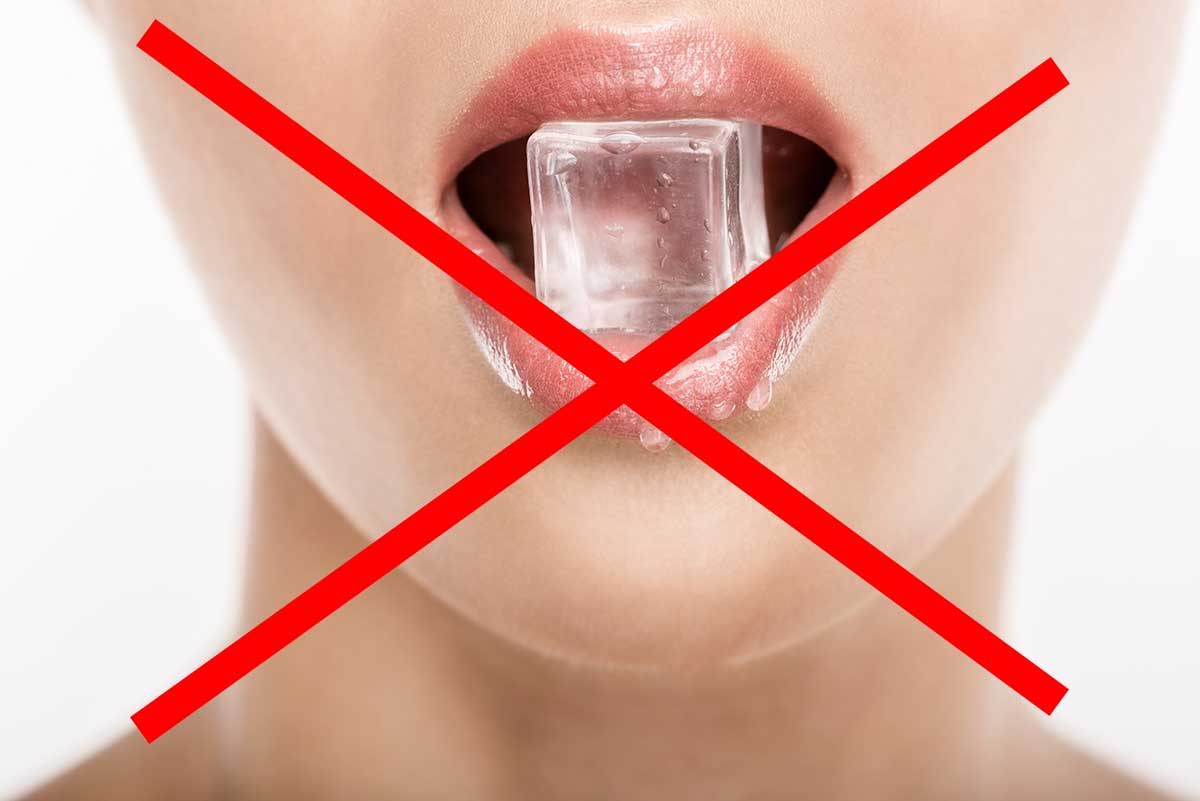
Caring for dental fillings properly extends their lifespan and helps maintain good overall oral health. Taking care of dental fillings is largely the same as caring for your normal teeth by brushing, flossing, rinsing and continuing with other aspects of your oral hygiene routine.
Special considerations should however be taken to ensure you:
- Use a soft-bristled toothbrush to avoid excessive wear on the fillings
- Avoid hard and sticky foods like ice, hard candies, soft candies, toffee, etc., that could crack or dislodge fillings.
- Avoid using your teeth as a tool. For example, opening packaging or bottles with your teeth can put excessive force on your fillings, leading to potential damage.
- Wear a mouthguard if you grind your teeth at night or participate in contact sports.
- Are aware of changes such as sensitivity or pain around the filling, which might indicate a problem. If you notice any changes, consult your dentist promptly.
When to replace old fillings and why
Dental fillings should be replaced when they show signs of wear, damage, or decay around them. The typical lifespan of a filling can vary depending on the material used and individual factors like oral hygiene habits, diet, and bite force. Here are key reasons and indicators for when a dental filling might need replacement:
Wear and tear: Over time, fillings can wear down from the constant pressure of chewing, grinding, or clenching. This wear can reduce the effectiveness of the filling in protecting the tooth.
Cracks or fractures: Fillings, particularly those made of amalgam or composite, can crack or fracture due to biting forces or temperature changes in the mouth. Cracked fillings can expose the tooth to bacteria, leading to decay.
Recurrent decay: Decay can develop around the edges of a filling if bacteria seep in, especially if oral hygiene is not maintained. This new decay undermines the filling and can affect the health of the tooth.
Loose fillings: Over time, a filling may become loose, creating a space where bacteria can enter and cause decay. A loose filling doesn’t adequately protect the tooth and needs replacement.
Changes in tooth sensitivity: If you experience increased sensitivity or pain around a filled tooth, it could indicate a problem with the filling, such as leakage, cracks, or underlying decay.
Aesthetic concerns: For front teeth, some may opt to replace older fillings due to discoloration or for newer, more aesthetically pleasing materials.
Allergic reactions: Rarely, patients may develop allergies to certain filling materials, like metals in amalgam fillings, necessitating their replacement with a different material.
Are dental fillings used for baby teeth?

Yes, dentists do put fillings into baby teeth (primary teeth) when necessary. Even though baby teeth eventually fall out, they play a crucial role in a child’s oral health and development. Here’s why fillings in baby teeth are important:
Cavity prevention: Fillings prevent further decay of the tooth, which can lead to pain, infection, and complications with eating and speaking.
Space maintenance: Baby teeth hold the correct spacing for permanent teeth. Losing a baby tooth too early due to decay can lead to spacing problems when permanent teeth come in.
Oral health: Untreated cavities in baby teeth can lead to abscesses and infections that could impact a child’s overall health.
Comfort and function: Fillings help maintain the tooth’s structure, ensuring the child can chew properly and comfortably.
Speech development: Healthy baby teeth are important for speech development, helping children form sounds correctly.
Dental filling guide FAQ
Signs you may need a filling include tooth pain, sensitivity, a visible hole or dark spot on your tooth, and food getting stuck in certain spots.
Typically, it takes about twenty minutes to an hour to prepare the tooth and place the filling.
The procedure is usually painless due to local anesthesia, although some sensitivity may be felt afterwards.
Fillings can fall out due to wear or decay; if this happens, contact your dentist promptly for a replacement.
Yes, a tooth typically needs a filling or crown after a root canal to restore its function and appearance.
Risks are minimal but can include sensitivity and, in rare cases, allergic reactions to filling materials.
While the filling will be set and hardened once the procedure is complete, it’s best to wait until the anesthesia wears off to avoid biting your cheek or tongue.
Yes, fillings that are worn out, damaged, or have decay underneath can be replaced.
Yes, children can get fillings, especially in cases of cavities or tooth damage. Your dentist will determine if a filling is apporpriate in your child’s case.
Yes, if you’ve just had a routine dental filling with only local anesthesia, you will be able to drive immediately after your appointment. If you’ve had any other form of anesthetic, you may not be able to drive safely – please speak with your dental professional first.
Check us out on Facebook and Twitter for daily information about Oral Health from Martindale Dental, or visit our offices in Hamilton and St. Catharines.
Have more questions?
Please contact us for all inquiries or to book an appointment with one of our convenient clinic locations. We look forward to hearing from you.




